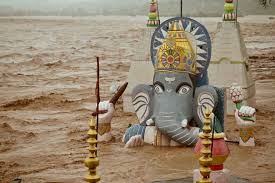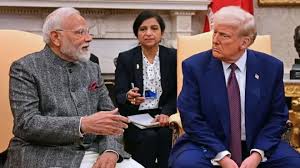Torrential rains, flash floods, and landslides have devastated large parts of Indian-administered Kashmir, leaving at least 40 people dead, many injured, and thousands homeless. Most of the victims were pilgrims traveling to the famous Vaishno Devi temple when sudden rains washed away roads and bridges.
Families across the region are mourning their losses. In the town of Gujar Nagar in Jammu, Ruksana, a 40-year-old woman, stood in tears before her damaged house. “I built this home working in other people’s homes. My husband is disabled. I could only save him and my two kids,” she said. “We lost everything else—food, clothes, books.”
On August 26, Jammu recorded its heaviest single-day rainfall ever—380 mm—breaking a 37-year-old record. The downpour caused landslides, blocked major roads, cut off phone and internet services, and swept away entire homes.
In Katra, a town known for religious tourism, many pilgrims went missing or were stranded. One survivor, Rakesh Kumar, described the panic: “Phones were dead, people were missing, and no one knew what was happening.”
The floodwaters have revived memories of the 2014 Kashmir floods, one of the worst disasters in the region’s history. Back then, entire towns were submerged, and thousands were displaced.
Law student Bashash Mahmood from Srinagar rushed to rescue his family after receiving a desperate phone call from his cousin. “Water was rising fast. I carried furniture and appliances to the second floor to save them,” he recalled.
Across Anantnag, South Kashmir, and Srinagar, residents rushed to save belongings and block water from entering homes. Elderly people, like 70-year-old Nazir Wani who needs oxygen support, were evacuated to higher ground by families fearing the worst.
Environmental experts say the disaster was made worse by poor planning and reckless construction. Massive development projects have destroyed floodplains and forests that once protected cities from such floods.
Activist Raja Muzaffar Bhat blamed road construction on natural floodplains, deforestation, and displacement of forest communities. “We’ve disturbed a balance that took hundreds of years to form. Now, the consequences are here,” he said.
A 61-km highway project built on low-lying land between Srinagar and Pulwama, for example, replaced soil-absorbing areas with concrete, reducing the land’s ability to soak up water.
Residents and leaders criticized authorities for failing to act on lessons from past floods. Jammu and Kashmir’s Chief Minister, Omar Abdullah, questioned what flood prevention measures had been taken since 2014.
In a post on social media, he said: “The last 48 hours have been a shocking eye-opener. What flood mitigation measures were implemented since 2014?”
The government has begun rescue and relief operations. More than 5,000 people were evacuated, and military planes delivered emergency aid. Relief camps have been set up, and compensation for affected families was announced.
Still, for many, the help came too late. The floods have made life even harder in a region already suffering from economic trouble. Since Kashmir lost its special political status in 2019, unemployment has soared, and public trust in governance has weakened.



